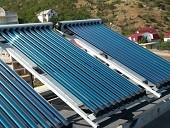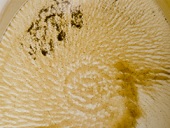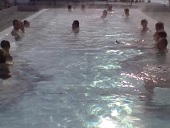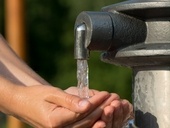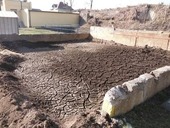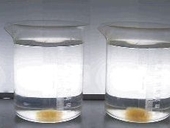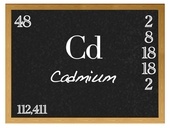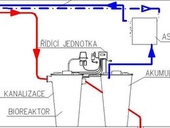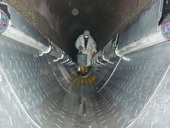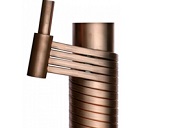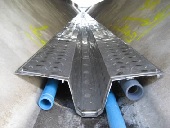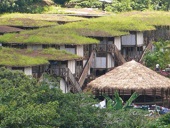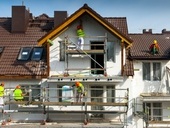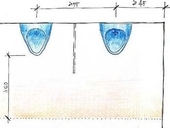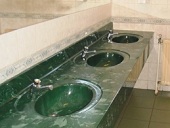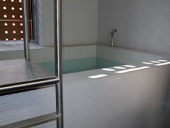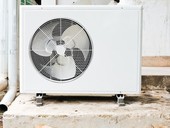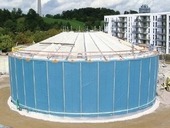First part of serial aims at general quality of suppliers and above all at purpose of the solar system installation. It is very difficult to identify the purpose of solar system supply for installations without any planning and energy yields calculations.
Archiv článků od 16.6.2014 do 30.3.2015
This article support consciousness about DMI-65 known as powerful iron and manganese removal from contaminated water sources. It was confirmed by testing DMI-65 that it can remove iron and manganese lower than particular national code requires. The ideal operating condition was reached for this application. The only chemical added for correct function of DMI-65 is sodium hypochlorite.
Pool water treatment is associated with a dose of disinfectants. Chlorine is the most common disinfectant, which is used for treatment of swimming pool water. Nowadays chlorine-free disinfections are tested, however chlorine is used in various forms for swimming pool water disinfection about 100 years. The article discusses the use of chlorine preparations for swimming pool water disinfection and giving practical examples of water disinfection in six swimming pool campuses.
Application forms for permits for the abstraction of groundwater are not uniformly understood and completed today. Correct completion of certain sections, as well as assessing the impact on nearby wells, requires knowledge not only of the annual quantity of water withdrawn. It is also necessary to take the time variation needs into account. For its estimate there is no prescription today. This article proposes how to understand and fill out these sections of the hydrological point of view. The hydrogeological assessments of same wells and plots must be based on the same initial values. This article proposes to use the principles of the defunct Guideline (1973) for calculation of maximum daily and monthly water consumption and for minimum required yield of wells. Calculations are based on annual water requirements set by legislation in force today.
The article discusses the possibilities of processing sludge from water treatment plants. Describes facilities for thickening and dewatering of water treatment sludge. In the Czech Republic for sludge thickening are most often used different types of tanks, flotation is used less. For sludge dewatering are used gravity dewatering facilities – sludge beds and sludge lagoons, from machine dewatering facilities are most commonly used filter presses and centrifuges.
Cadmium is a component of some pigments and used as a stabilizer of some thermoplastics, eg. PVC. In the combustion of fossil fuels, plastics, and passes cadmium into the atmosphere. Subsequently, the heavy metal gets due to atmospheric water from contaminated atmosphere into the soil.
The article describes the sources, forms and health risks of cadmium in water and mainly removal of cadmium from water using sorption materials CFH 0818, Bayoxide E33 and GEH. The results of laboratory measurement show that all three materials were able to reduce cadmium concentrations well below the limit of decree no. 252/2004 Sb.
By considering the savings on the cost of water and sewerage return using gray water in a small hotel in the Krušné hory showed that the payback period is around 10 years with the aqueous saving of about 20 000 CZK per year. The solution is both economical and environmentally friendly and natural resources.
Waste water that ends up in the sewer network contains a large amount of energy. Utilization of this energy, which is also available throughout whole year, is not yet part of the standard engineering practice in the Czech Republic. This article brings an inspiration in the form of experience from Austrian city of Amstetten, where was implemented a project, which is using combination of a sewage heat exchanger and a heat pump. State of the art as the same as the factors affecting the utilization of waste heat are also included.
The emergence of the working colonies of coffee plantations in Nicaragua is one of the most interesting construction projects in which is utilized the “Grow Your Own House” theory. In 2008, a Spanish design office developed a project based on environmental principles with the use of local material resources and subsequently there was built a self-sufficient colony Santa Emilia for coffee plantation workers in Matgapalga, Nicaragua.
Which buildings can receive grants from the Green Savings Programme, amount of the grants and what technical details cover the energy audit? Part A in this article covers the specific questions (building’s envelope rennovation). A sample of 16 family houses that comply with all the required conditions of the New Green Saving Programme from 2013 is further described in this article.
There are two kinds of urinals – those which are separated and those which are not separated by optical barrier. The aim of the paper is to rediscover an urinal panel as a symbolical separation of side-by-side standing men, boys. After a brief introduction of fixtures for in-standing-position pissing follows the description of the present state in chosen gentlemen´s toilets.
The author compares use of heat pump with solar systems serving for heating hot water for a block of flats in Prague, in his study. The meteorological data from the station Prague-Karlov and the program developed in the framework of a diploma work are taken for the comparison. The comparison is elaborated both from the energy point of view and economically from an orientation view.
This paper is focused on hot water tanks for long-term heat storage. Describes the design of the tanks and and their properties. The evaluation of tanks is based on the results of real systems. Tanks are mainly used for solar systems with long-term heat storage. The use of solar systems with long-term heat storage for building opens new possibilities for further savings of energy from non-renewable sources.
zpět na aktuální články
